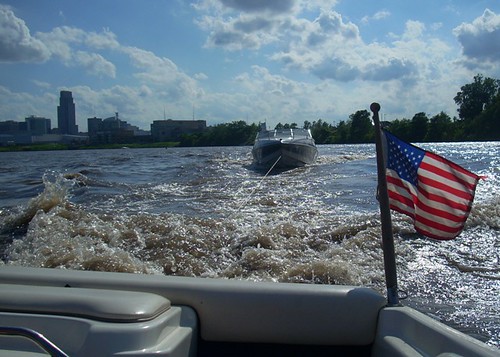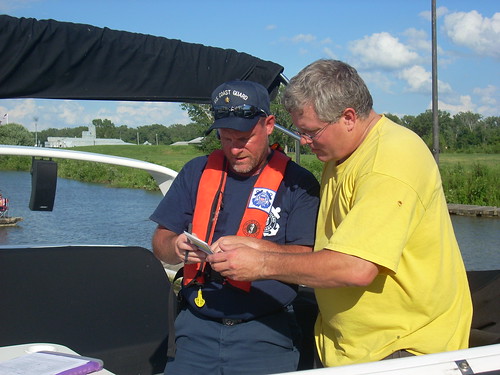 Park Ranger Emily Coffin, Saylorville Lake, helps a young Cubs fan try on a life jacket and adjust the straps for proper fit.
Park Ranger Emily Coffin, Saylorville Lake, helps a young Cubs fan try on a life jacket and adjust the straps for proper fit.(U.S. Coast Guard Auxiliary Photo by Marty Robey)
That do you get when you mix Bobber the Water Safety Dog and baseball? A home run at the Fifth Annual Water Safety Night at the Iowa Cubs game in Des Moines, Iowa.
This Annual Water Safety Night at the Iowa Cubs game was a joint event with the Corps of Engineers and the U.S. Coast Guard Auxiliary. Park Ranger Emily Coffin and Elyse Logan along with Coast Guard Auxilarists Doug Jansen and Marty Robey promoted water safety to kids and adults prior to and during the game.
Bobber threw out the first pitch for the packed game between the Iowa Cubs and the Memphis Redbirds. After throwing out the first pitch Bobber roamed the stands and met kids of all ages.
"Bobber helped us make some great interactions," said Park Ranger Emily Coffin. "He helped us to drive home some important water safety messages, including to always wear your life jacket."
Hundreds of baseball fans stopped by the water safety display at the park to learn about life jackets, boating safety and to meet Bobber. Bobber helped to inform young children about water safety to help them make the right choices when they are around water. Life jackets were available for children to try on to get sized for a proper fit. Parents were given slips to indicate the correct size so that they can purchase properly fitted life jackets for their children. There was also a water safety activity where kids were asked water safety trivia questions to earn prizes.
"Our partnership with the Corps of Engineers for this event helps us both to get out the message about water safety," said Auxilarist Doug Jansen.
Later that night, Auxilarist Jansen spent some time in the broadcast booth with Deene Ehlis and Randy Wehofer, Iowa Cubs broadcasters, to talk about water safety with the listeners. The conversation emphasized the importance of wearing life jackets and safe boating practices.
The water safety night was a success, as hundreds of children and their families were exposed to water safety education as they geared up for the busy 4th of July weekend.

Bobber the Water Safety Dog poses for a photo at the Water Safety Night at the Iowa Cubs Game.
(U.S. Coast Guard Auxiliary Photo by Marty Robey)









